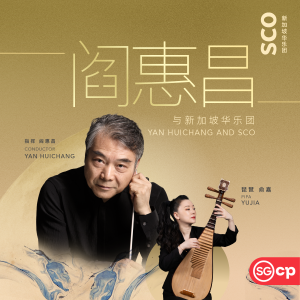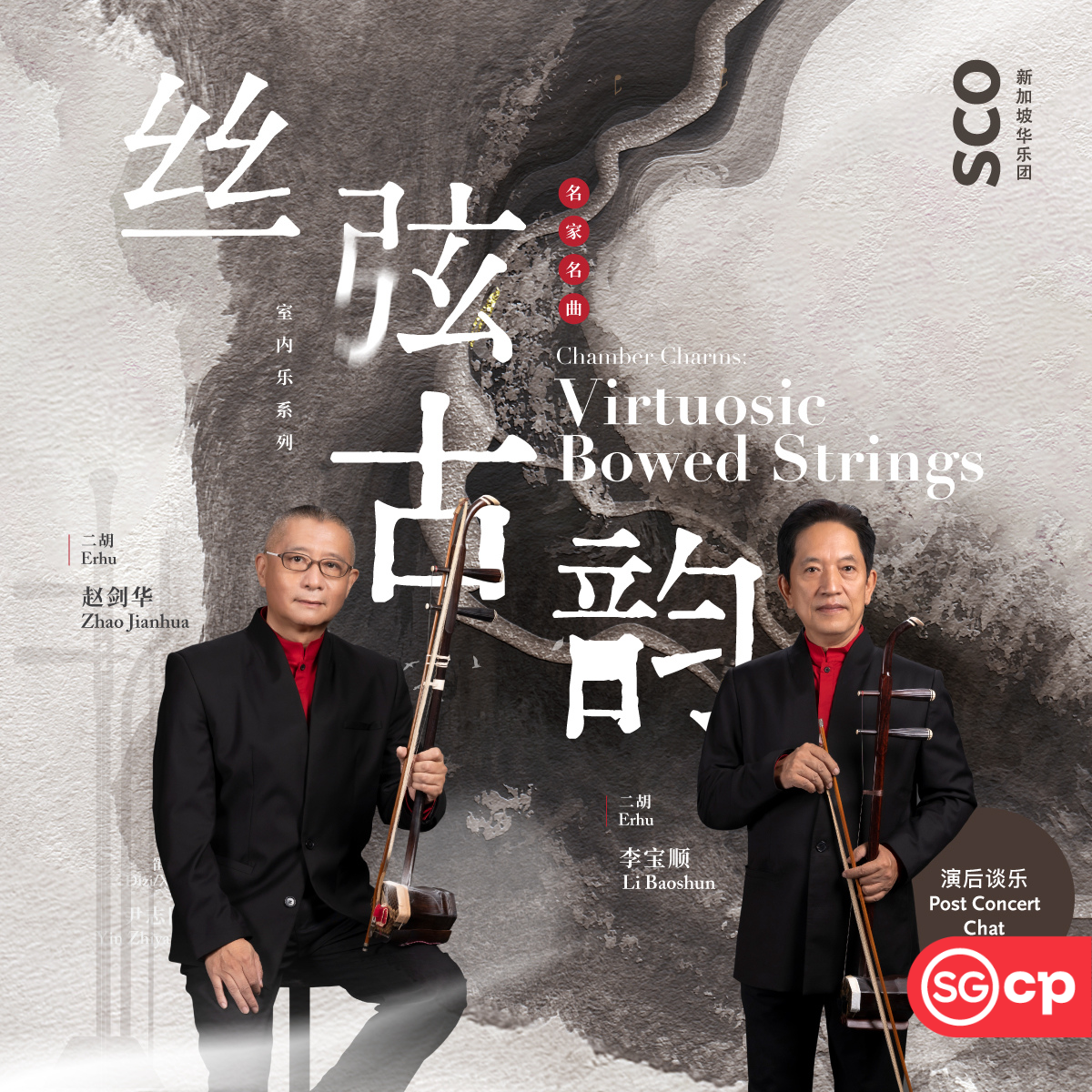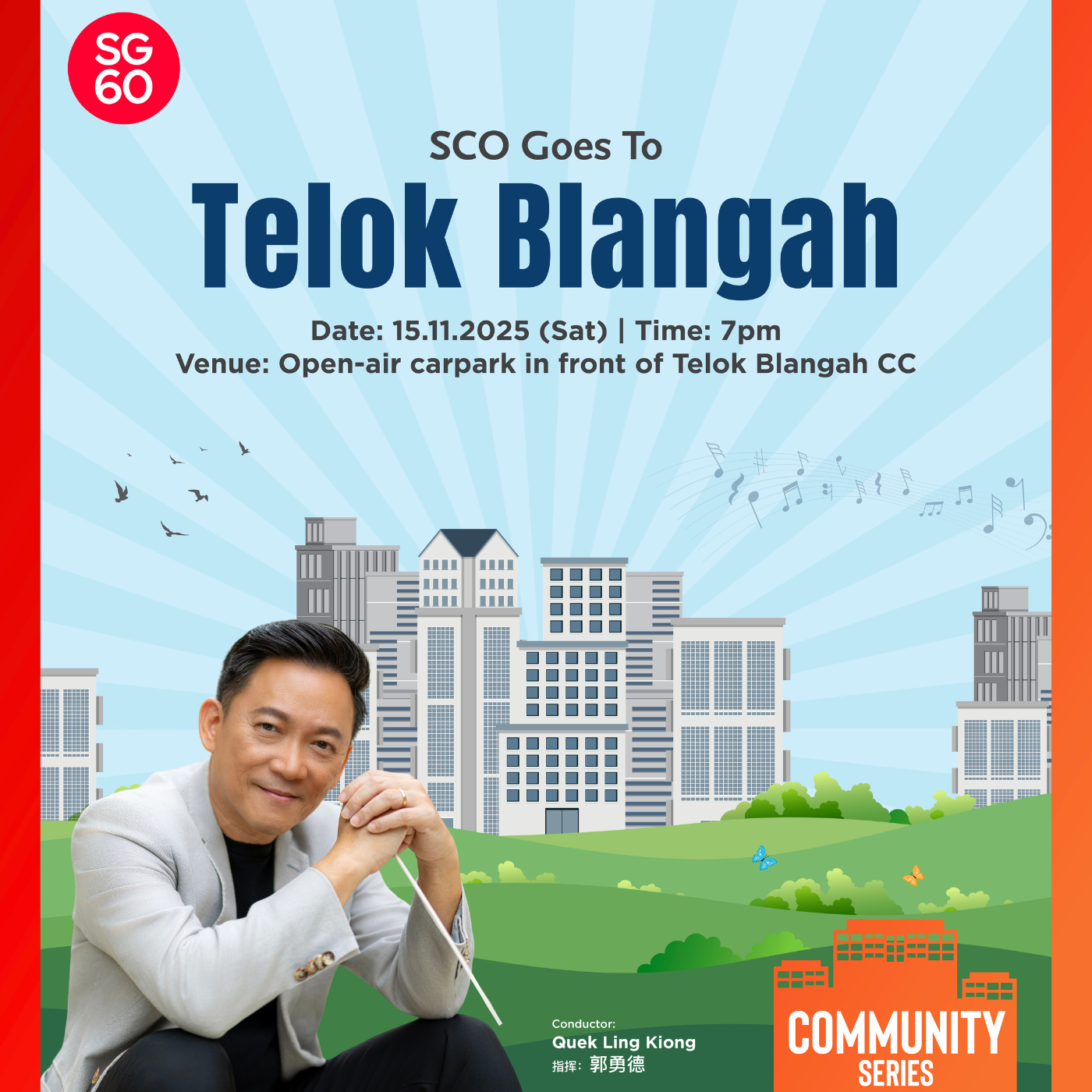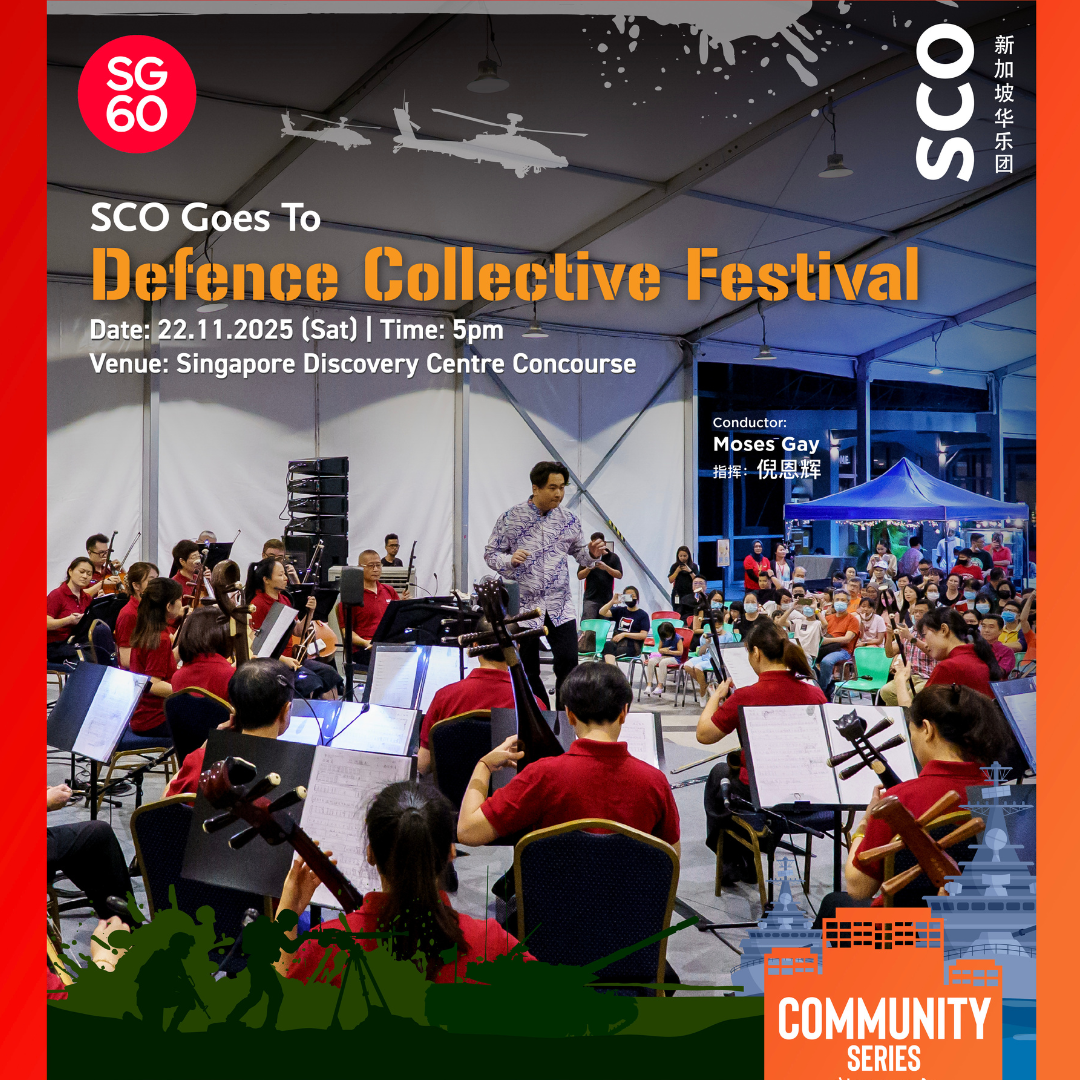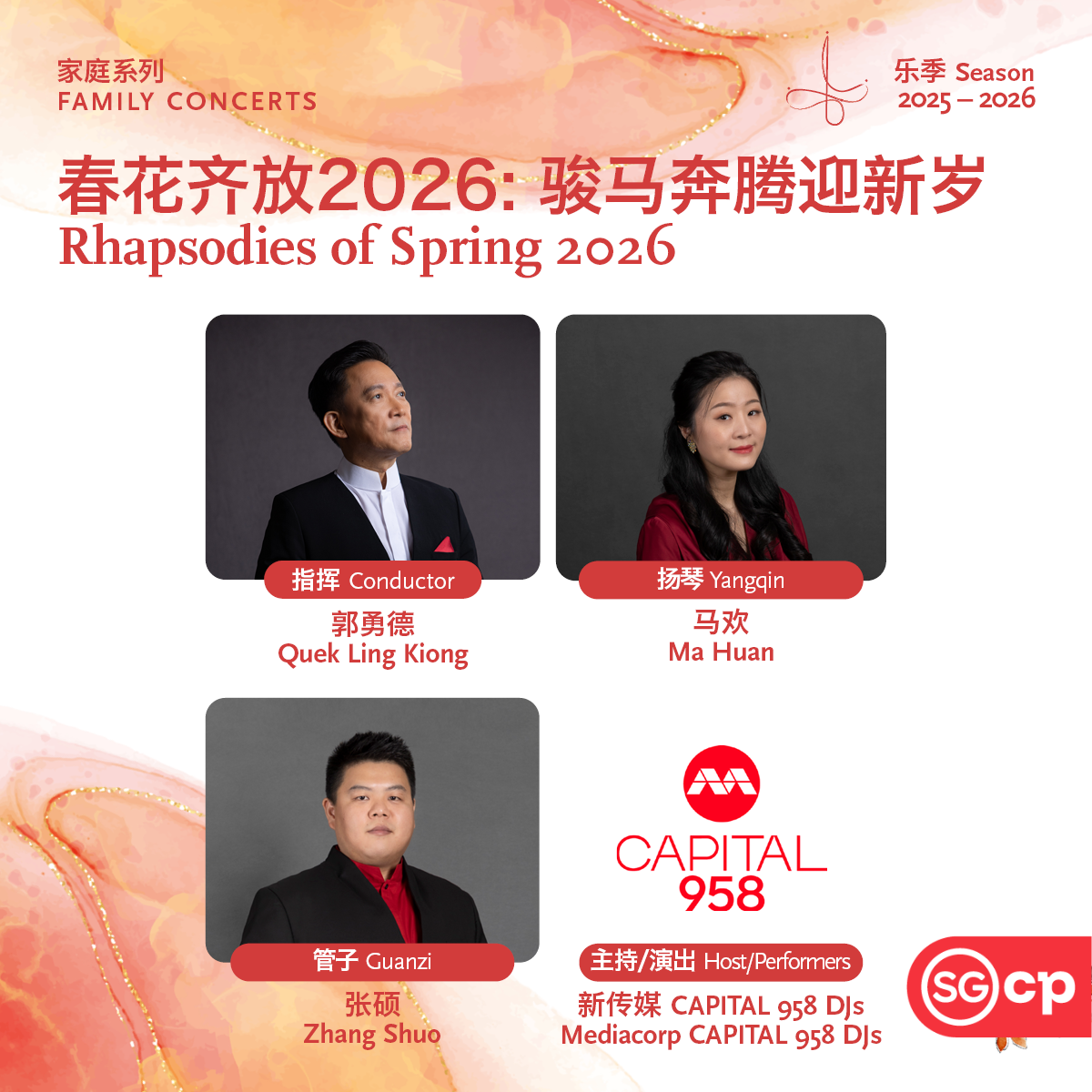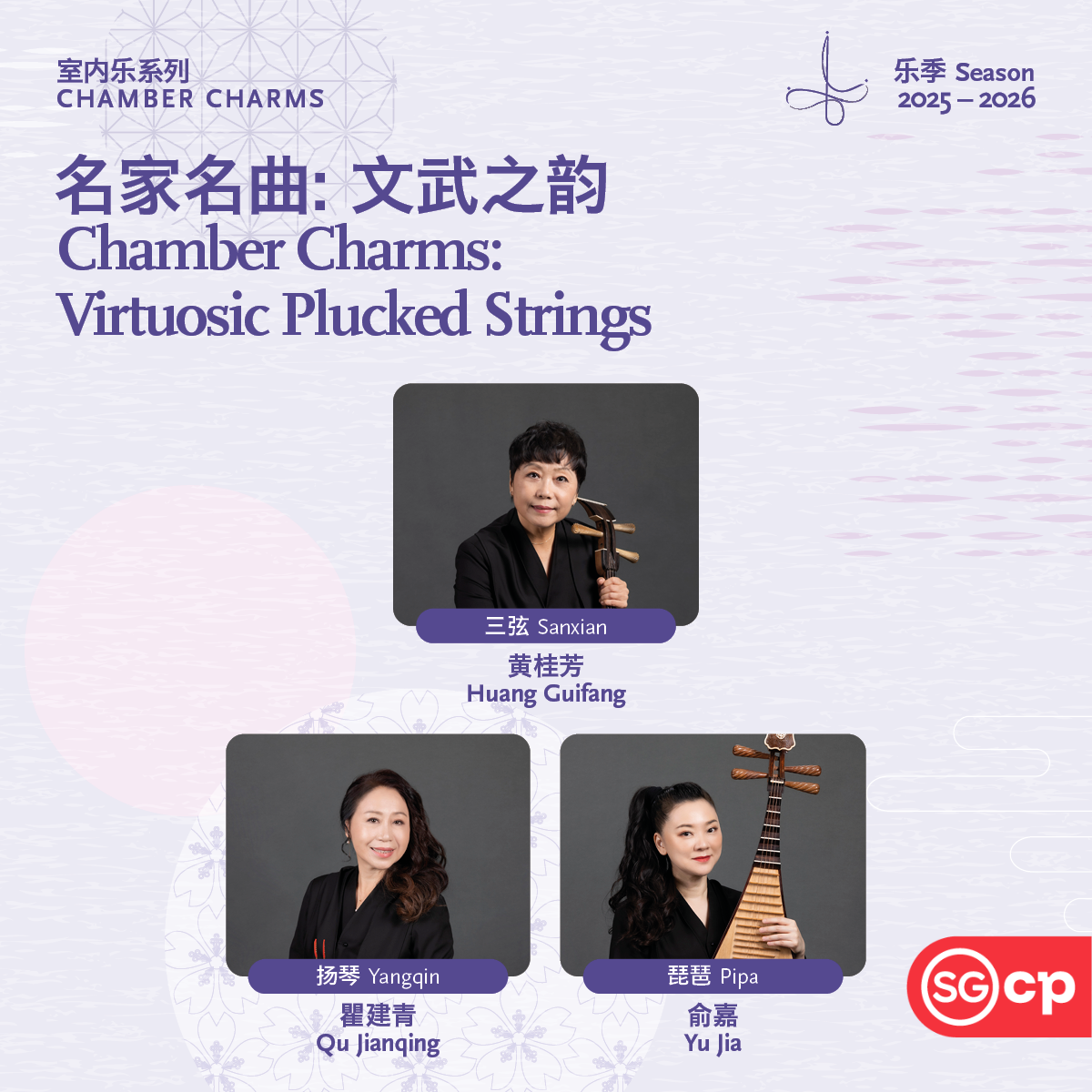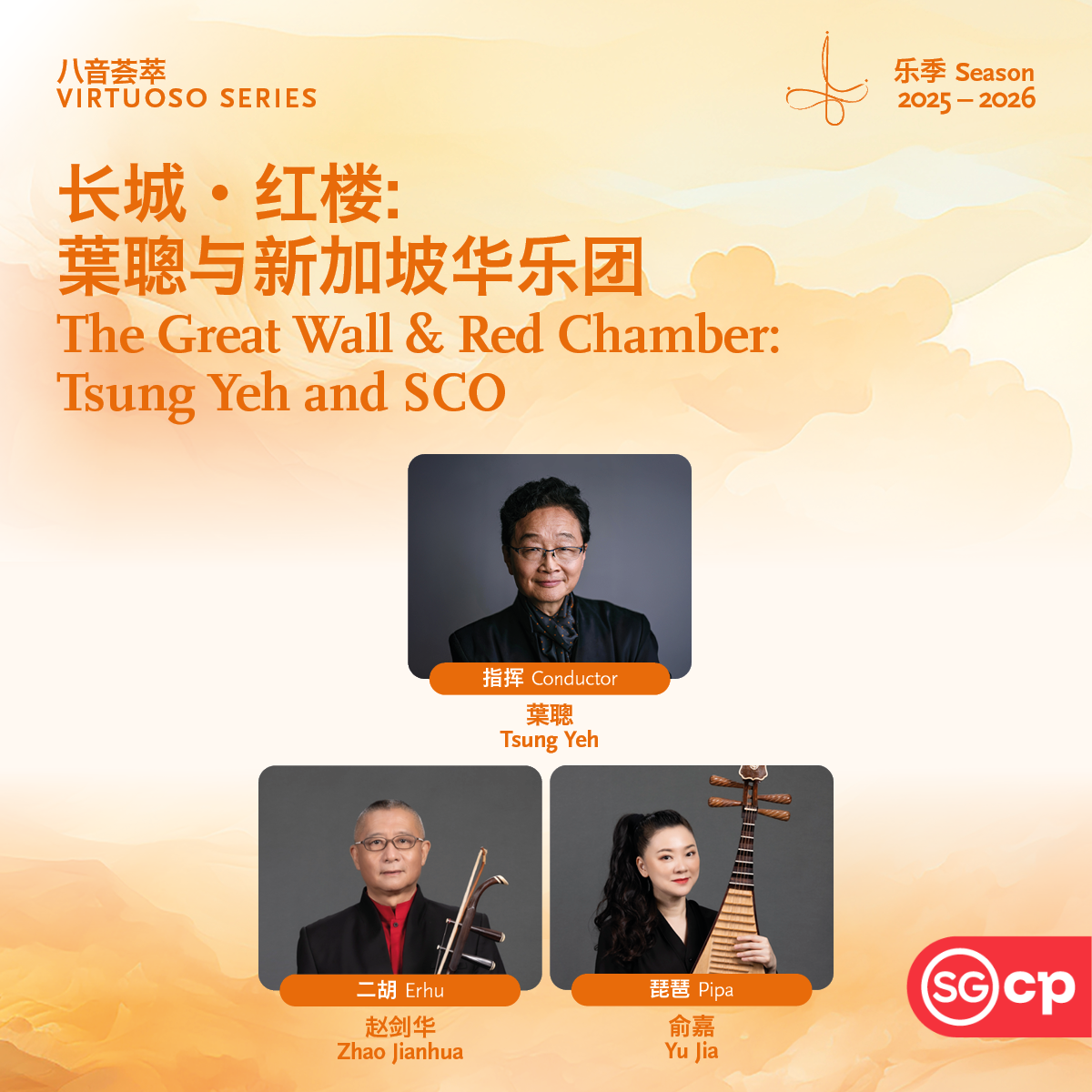This concert unfolds as a journey between heritage and renewal. Returning to the Singapore Chinese Orchestra, maestro Yan Huichang conducts with a composer’s sensibility — shaping phrasing, balance and timbre as though sound-sculpting. Under his baton, ancient melodies gain a new pulse of modernity, while contemporary works trace their roots back to tradition.
The General’s Command is an ancient traditional tune originating from the “Ten Percussion Pieces” repertoire, often performed to open an opera or to depict military scenes. Its bold musical characters are marked by dense rhythms and tightly structured motifs that evoke galloping horses and fluttering battle flags. In the 1950s, conductor-composer Peng Xiuwen adapted the piece for modern Chinese orchestra, using contemporary orchestration to expand its colors and structure, transforming traditional percussion’s raw energy into a vivid symphonic expression of martial strength.
The piece begins with resounding tanggu and cymbals, gradually building into a fast and unified ensemble passage. Strings and winds build on a fanfare motif that swells in power, ending in a grand chord attributing to the spirit of Chinese martial music.
Nocturnal Peace was composed by Liu Tianhua on Chinese New Year’s Eve in 1928, during a festive gathering with his students and friends. Though only a few minutes long, the work captures warmth and serenity through its concise two-part form. The joyous atmosphere of the night inspired Liu to create the piece spontaneously — it was originally titled A Small Song for New Year’s Eve and later renamed Nocturnal Peace (literally, “A Beautiful Night”).
At the time, Liu was deeply involved in reforming traditional Chinese music, founding societies and journals dedicated to its advancement. The piece’s flowing, lyrical melody blends Chinese pentatonic charm with Western structural clarity, reflecting the composer’s optimism for the future of national music amid turbulent times.
Zhao Jiping’s Pipa Concerto No. 2 was completed in 2013 and jointly commissioned by the Sydney Symphony Orchestra and six American orchestras for pipa virtuoso Wu Man. It was the first pipa concerto ever funded by major Western symphonic institutions, marking a milestone in the instrument’s international recognition.
Drawing inspiration from the Suzhou pingtan tradition, Zhao infused the concerto with the lilting cadence and supple phrasing of Jiangnan’s wu nong ruan yu (“soft speech of the Wu dialect”). Structured as a single-movement work with multiple sections, the piece opens like a storyteller’s prelude: the pipa enters in free-flowing recitative, unfolding a lyrical theme over rich string harmonies. As the tempo accelerates, soloist and orchestra weave an intricate dialogue rich in rhythmic interplay and virtuosic display. In the final section, the melody returns and gradually fades into the high register, leaving an impression of a tale gently coming to rest. Zhao balances national idioms with symphonic texture, extending his signature aesthetic of poetic sound-painting.
Sketches of a Dong Village was composed by Zhao Yongshan in the 1960s and 70s, following his fieldwork in the Dong regions of Guizhou, Hunan, and Guangxi. A landmark suite in Chinese symphonic folk writing, it portrays the everyday life and spirited character of the Dong people through four vivid “musical sketches.”
In The Pipa Song, Zhao draws on the traditional ga pipa—the Dong’s self-accompanied singing style—to create fluid pentatonic lines that echo the contours of the Dong language, evoking intimate scenes of lovers’ duets. Floating Logs uses bright percussion patterns to imitate the sound of paddles and work chants, building rhythmic energy that captures the collective force of log-rafting along mountain streams. Under the Moon turns introspective, as gaohu and dizi trade tender phrases over soft plucked harmonies, conjuring the serenity of moonlit villages and youthful courtship songs. Finally, The Bullfight bursts into celebration: blaring suona calls, pounding drums, and clashing cymbals recreate the spectacle and excitement of a festival contest.
Tang Resonating was composed in 2016 by Hong Kong composer Ng Cheuk-yin for the Hong Kong Chinese Orchestra. Inspired by the cultural grandeur of the Tang dynasty, the work unfolds in four continuous sections—Dream, Prosperity, Dance, and Harmony—charting a journey from the dawn of the Tang’s aspirations to its flourishing cosmopolitanism and eventual vision of universal harmony. The opening Dream begins with a pipa solo echoing the ancient melody The Moon Rising High, entwined with the timbres of xiao and guzheng, evoking a poetic reverie of ancient empire. In Prosperity, the full orchestra enters with broad, sonorous textures that reflect the Tang court’s splendour and confidence. Dance fuses courtly rhythms with modern energy, interlacing festive percussion and syncopated jazz inflections to suggest a dialogue between past and present. The final section, Harmony, gathers these motifs into a soaring, unifying theme symbolising “great unity under heaven.”
The concert traces a continuum of Chinese music, moving from ancient melodies to contemporary voices with modern imagination. Chinese orchestral music emerges not as a mere echo of the past, but a living language — vibrant, evolving, and speaking to the world today.

